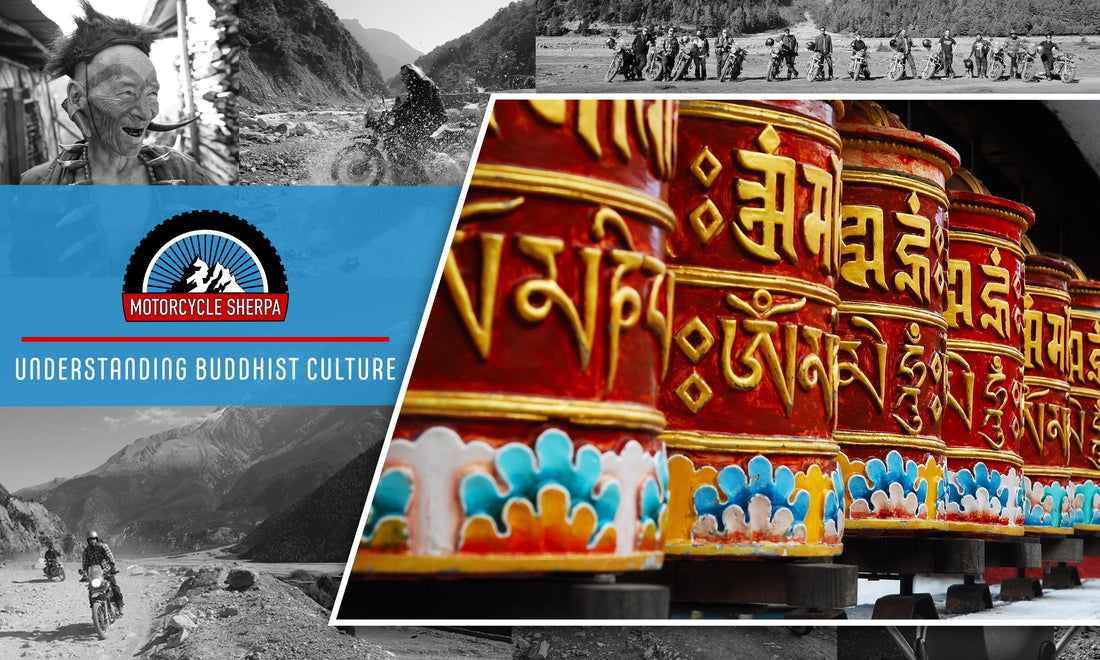
Understanding Buddhist Culture
Share
Buddhism is one of the largest religions in the world with over 500 million followers worldwide. Part religion, part culture, part way of life, Buddhism first began in India about 2,500 years ago.
Siddhartha Gautama
Siddhartha Gautama, an Indian prince born in 563 B.C.E., came to the realization that human life was centered on suffering after seeing all the dying and poor people. To cope with this, he renounced his wealth and became a beggar who traveled and meditated.
After living life wealthy and poor, he settled on something known as the “Middle Way,” or the idea that being extremely wealthy or extremely poor would never lead to enlightenment. Siddhartha Gautama achieved a state of deep mediation where he reached nirvana, or enlightenment, beneath a Bodhi tree.
Fun fact: The Bodhi tree is known as the tree of awakening.

The Mahabodhi Temple
This temple in Bihar, India is where Siddhartha originally reached enlightenment and is a popular pilgrimage site for Buddhists.
The Birth of Buddhism Around the World
Following Siddhartha Gautama’s death in 483 B.C.E., his teachings were organized by his students and became the basis for what would be known as Buddhism.
In the 3rd century B.C.E., the Mauryan Indian Emperor Ashoka the Great declared Buddhism the religion of India. He ordered the construction of monasteries and doing missionary work was highly encouraged.
Over the next few hundred years, Buddhism slowly spread, and the beliefs and practices became diversified. This is why Buddhism is considered a tolerant and constantly evolving belief system.
The Four Noble Truths of Buddhism
Siddhartha Gautama, who became known as Buddha, laid out the Four Noble Truths.
Fun fact: The word Buddha means “enlightened.”
Truth One: Dukka (or Suffering)
This truth teaches that all people are suffering in one way or another.
Truth Two: Samudāya (or The Origin of Suffering)
This truth teaches that the source of suffering is desire.
Truth Three: Nirodha (or Cessation of Suffering)
This truth teaches that ending suffering and achieving enlightenment is possible.
Truth Four: Magga (or The Path to the Cessation of Suffering)
This truth focuses on the Middle Way, which emphasizes balance, and is the path to enlightenment.

The Two Groups of Buddhism
Buddhism can be divided into two groups: Theravada Buddhism and Mahayana Buddhism.
Theravada Buddhism
This style of Buddhism is most frequently practiced in Laos, Cambodia, Myanmar, Sri Lanka, and Thailand. Enlightenment is achieved through mediation and a monastic lifestyle.
Mahayana Buddhism
This style of Buddhism is practiced in Korea, Taiwan, Tibet, Nepal, Mongolia, China, and Japan. The emphasis is on the bodhisattvas, or role models who attained enlightenment and became teachers.
The Dalai Lama
Much like how the Pope is the leader of Catholics around the world, the Dalai Lama is the leader and head of Buddhism. While also traditionally the leader and ruler of Tibet, the Dalai Lama fled when China took control of the country in 1959. He now resides in India. The current Dalai Lama is actually the 14th reincarnation of the first Dalai Lama, which is an important belief in Buddhism.

Basic Beliefs
All Buddhists share a simple yet profound belief system. Human life is an endless cycle of suffering and rebirth. However, this cycle can be escaped by achieving enlightenment, or nirvana. Unlike most religions, Buddhists do not believe in any gods or deities.
The Wheel of Rebirth
Much like how the Dalai Lama chooses to be reborn to continue to help humanity, Buddhists believe that souls are continuously reborn into new bodies. Which body they are born into depends on how they behaved in their previous life.
This belief is interconnected to karma, or how bad and good actions in past lives (or actions taken in the current life) impact the future and future lives. For example, someone who does bad deeds may be reborn as a dung beetle while someone who does good deeds will reincarnate as a human and lead a life filled with positivity and comfort.

Attaining Enlightenment
Followers of Buddhism all have one shared goal: to attain enlightenment, or a state of internal wisdom and peace. There is no one path or way to achieve enlightenment, but an emphasis is placed on wisdom, meditation, and morality.
Those who follow Buddhism tend to avoid self-indulgence and self-denial, as life is about achieving a balance. Buddhists also believe in both reincarnation and karma.
There is no right way to practice Buddhism, so followers can do it at home or in a temple (or, in following Buddha, under a tree).
Compassion
One of the major tenets of Buddhism is showing compassion, both to humans and animals. This comprises both not harming oneself or another, but also finding ways to bring happiness to all.

The Five Precepts of Harmlessness
Consider these as the basis of Buddhism. While they are encouraged, they are not required, and anyone who doesn’t meet or who breaks one of these tenets is still welcomed.
- Refrain from lying
- Refrain from the intentional killing of any living being
- Refrain from using alcohol and drugs (medicine prescribed by doctors is fine)
- Refrain from stealing
- Refrain from sexual misconduct (including adultery)
Culture and Buddhism
Traditions may vary widely from one region and country to another, just like monks, strict Buddhists, and lay Buddhists will practice to different and varying degrees. Here are a few things to look for.

Communication
Buddhists speak many languages, but one common thread is that, particularly in South-East Asia, Buddhists may dislike saying no or disagreeing with someone (to not be seen as rude). In place of saying “no,” they may instead hint at this answer or find an indirect way to express it.
Body Language
Nonverbal communication can play an important part for some Buddhists. For example, when entering a temple or a monastery, it’s customary to remove your shoes and any head coverings. When in front of a statue of Buddha, Buddhists will typically bow three times as a way to pay their respects.
Buddhist monks typically avoid physical contact or being in close proximity with the opposite gender. Touching someone’s head is impolite, and if there is a need (like for a medical exam), permission should be sought first.

Dress
Monks typically shave their heads and wear brown, maroon, black, red, or grey robes. However, lay Buddhists (the average practitioner) can wear any clothes and don’t have to shave their heads. In many countries, Buddhists prefer to dress modestly, and anyone who visits a monastery or temple should dress modestly, as well.
Food
While there are no traditional food or drinks associated with Buddhism, some Buddhists have preferences that should be respected. Most avoid alcohol and meat but won’t take offense if others choose to drink or eat meat.
Celebrations
Vesak Day: Celebrated on the full moon of May, this day is in commemoration of the birth, enlightenment, and death of Buddha.
Uposatha: This day, which happens about every seven or eight days on the new, waxing, waning, and full moons, is a day for renewing one’s dedication to Buddhism. Followers will often visit a temple or monastery on this day.
Buddhism Today
Buddhism continues to thrive and evolve as practitioners from around the world turn to this simple and compassionate way of life. It can be practiced by anyone, anywhere, and at any time.

